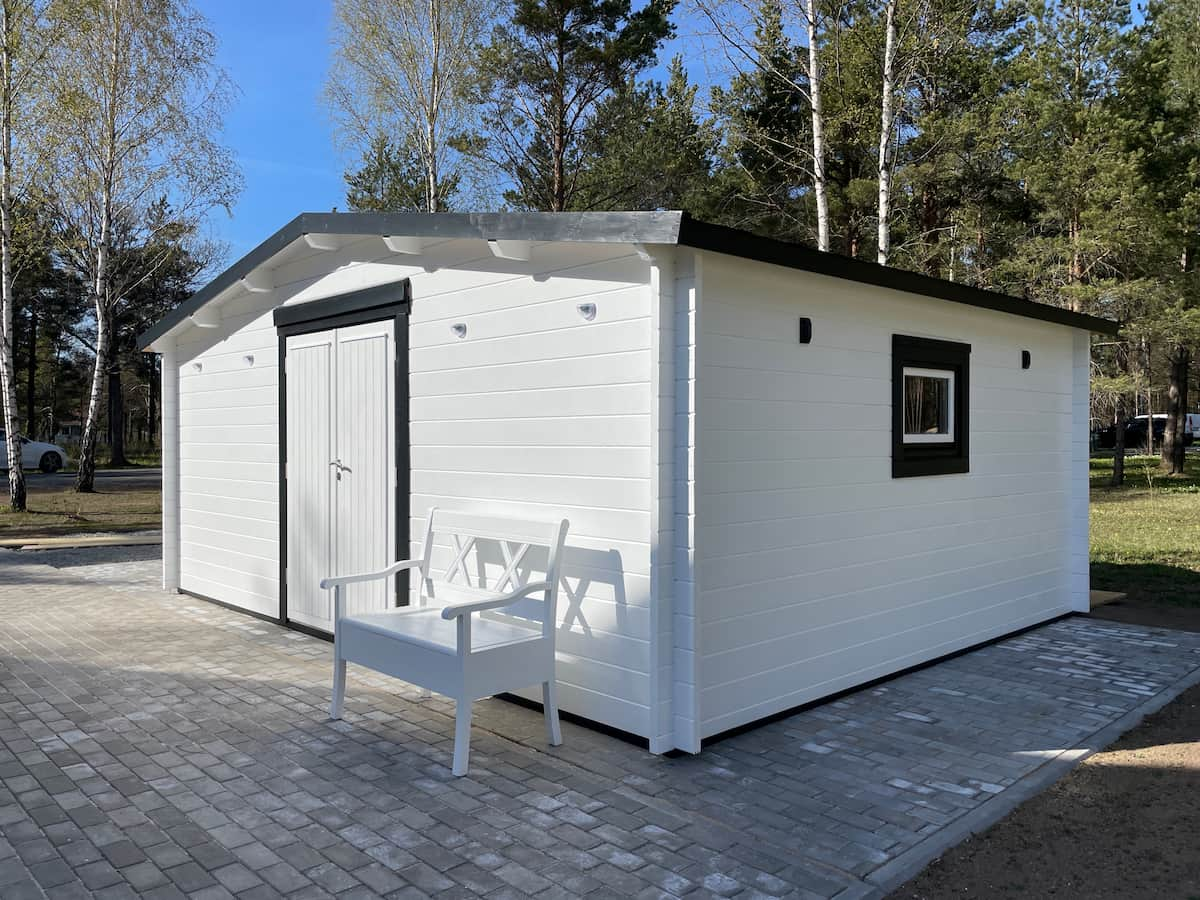
A cheap shed can be a wonderful solution when you need additional space for either storage, a small workshop, or even a practical outdoor corner. It’s tempting to think that any budget structure will do… but the reality is that an improvised construction can cause more problems than it solves: leaks, instability, accelerated deterioration, or even penalties if local regulations aren’t respected.
On the other hand, building a shed by yourself can be a very rewarding experience! And, often more economical than buying an installed one. However, it requires organization, time, and certain basic DIY knowledge, since poor assembly can cause collapses, injuries, or property damage.
If you don’t have sufficient experience, the most sensible approach is to get help from someone who does or opt directly for a prefabricated model that guarantees stability, resistance, and faster installation.
Below you’ll find practical ideas and solutions for building your own shed safely and economically, avoiding common mistakes and making decisions that favor the structure’s durability and functionality. You’ll also find prefabricated alternatives and tips for choosing the best option according to your needs.
Many homeowners are looking for a practical solution without a high price tag. Whether it’s for storing tools, protecting machinery, or outdoor leisure space, an economical shed can perfectly fulfill its function – if planned well.
Financially speaking, a cheap shed allows you to adjust your budget and allocate savings to other home elements. But it’s also worth considering that a well-built shed, even if economical, can last for years, while an improvised or poorly constructed one will have a much shorter lifespan.
If your goal is to save money, building your own shed can be the cheaper option. You control the choice of materials, adapt the design to your needs, and can enjoy the process if you like the DIY approach to things.
However, the savings only manifest as reality if the project is executed well. A poorly leveled structure or one with assembly errors can end up gcosting you more and, in the long run, cost more than a prefabricated shed.
If you don’t have experience or prefer to avoid possible issues, a cheap prefabricated shed offers greater safety and speed. These models are designed for easy assembly, with clear instructions and suitable materials to avoid structural failures.
For beginners, this option minimizes the risk of making costly mistakes and allows you to have the shed ready in no time at all.
From a long-term perspective, the quality of the shed directly influences your home:
| Aspect | DIY Shed | Prefabricated Shed |
| Estimated price | From €500-1500 | From €4300 (base Hansa model) |
| Construction time | 2-4 weekends | 1-2 days assembly |
| Difficulty level | Medium-high | Low |
| Structural safety | Depends on experience | Factory certified |
| Durability | Variable (2-5 years if cheap) | High (10+ years) |
| Added property value | Limited | Positive |
| Aesthetics/Finish | Basic/rustic | Professional |
Before beginning any construction, even a cheap shed, it’s important to dedicate time to evaluating the environment, needs, and local regulations. This is all to avoid issues down the line, so don’t skip these steps.
Check the surface area and ground leveling. Avoid areas with large roots, very steep slopes, or risk of waterlogging.
Consider sun orientation and wind exposure as well. A shed placed in an area where the sun shines directly, all day, will suffer greater wear on the paint and roof, especially if it’s lightweight sheet metal. An overly shaded location can promote humidity, mold, or faster wood deterioration.
Wind is another element to consider: in open or elevated plots, it’s a good idea to reinforce anchors and choose roofing with better fixation to prevent lifting during storms. It’s also useful to plan a minimum distance from walls, trees, and other structures, both to facilitate maintenance and to avoid damage if a branch falls or if the shed needs future adjustments.
The use will directly influence the shed’s size, door type, and design. A shed for storing tools is not the same as one for DIY projects or as a small leisure retreat. If you want to compare uses, sizes, and models in more detail, keep reading this guide to choose the ideal shed.
Although many small sheds don’t require a license, some autonomous communities require prior notices or have surface and height limits.
Therefore, getting acquainted with local rules before starting your project is essential to avoid unpleasant surprises. You may get fines for violating urban planning regulations or even the obligation to dismantle the shed if it doesn’t meet the requirements established in your locality.
Calculate materials, tools, and possible contingencies. Underestimating time or cost is one of the most common mistakes in this type of project. A realistic budget prevents the project from being left half-finished.
Use gloves, goggles, appropriate footwear, and stable supports or additional help when lifting heavy panels. Improper handling of tools or bulky pieces can easily cause preventable accidents.
Planning these details from the beginning avoids more costly later interventions and improves the construction’s overall durability.
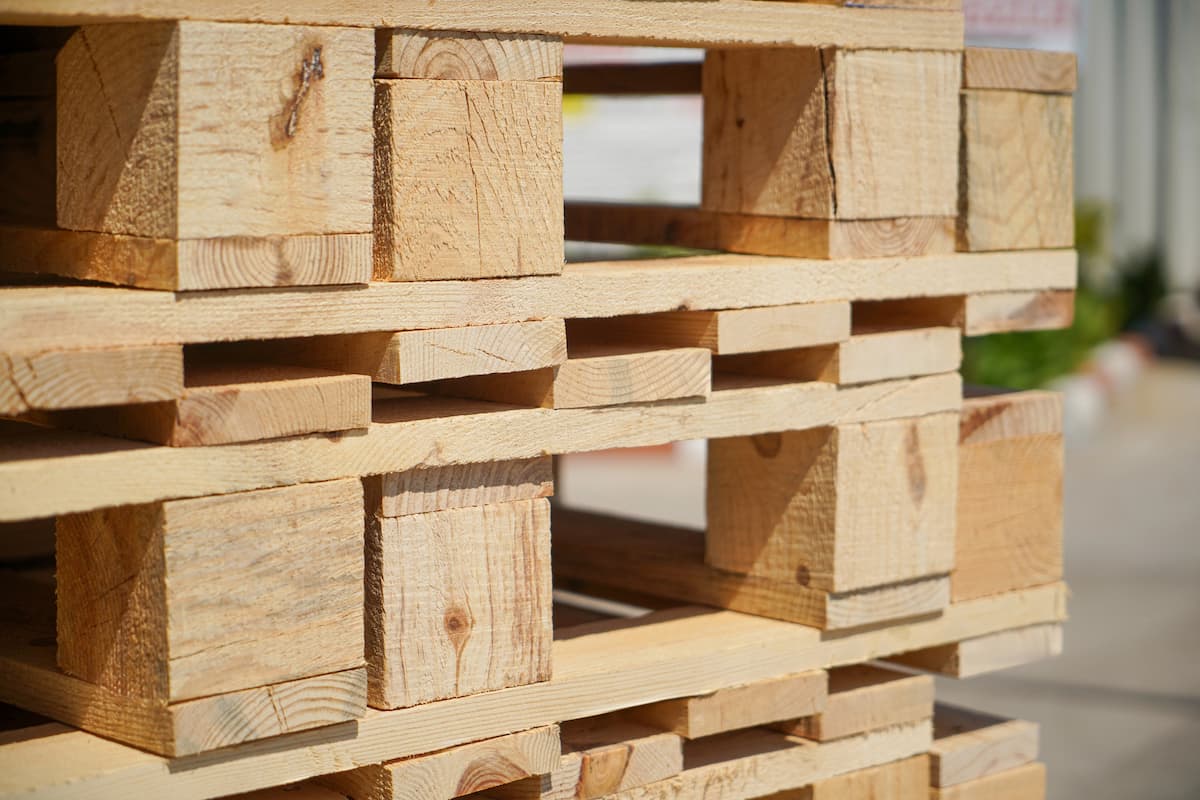
Material is one of the factors that most influences final cost, durability, and maintenance. Choosing wisely is crucial to achieving an economical and durable shed. The most common options are:
They’re a very cheap option, perfect for temporary structures or light use. However, they require prior inspection to avoid damp wood, insects, or damaged pieces.
Advantages: economical, easy to find. Disadvantages: limited durability; not always treated; require sorting; not suitable for humid areas.
OSB boards are economical, resistant, and widely used in lightweight constructions. They work well for walls and floors, as long as they’re properly protected against moisture.
Advantages: accessible price, uniform, good structural resistance. Disadvantages: need waterproofing.
Although not the cheapest material, it allows savings on insulation and labor, since it installs quickly.
Advantages: lightweight, insulating. Disadvantages: more expensive than OSB, though more durable.
Pressure-treated pine offers a good quality-price ratio and greater outdoor durability. If you choose recovered wood, make sure to identify structural cracks, hidden nails, or soft spots. Careful review before building avoids load problems and ensures walls and base remain firm over time.
Advantages: sustainable and very economical. Disadvantages: requires sanding, treatment, and careful selection.
These opportunities can reduce the budget without compromising safety:
Often, DIY centers offer discounted lots due to seasonal changes or small aesthetic defects that don’t affect resistance.
Economical materials require more maintenance. It will be necessary to apply varnish, sealant, or paint every year to extend their lifespan.
Sometimes, a slightly more expensive material proves more cost-effective because it requires fewer annual interventions, fewer protective products, and offers greater stability against humidity. For example, OSB externalized with appropriate sealants can last significantly longer than very cheap woods without treatment.
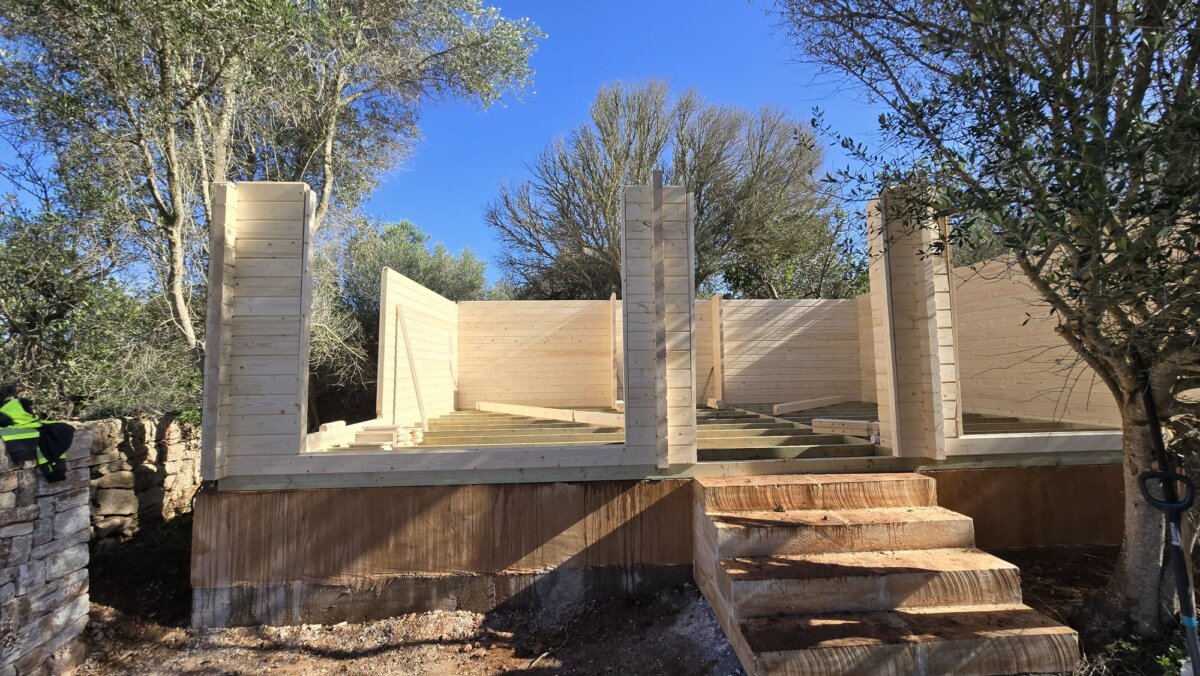
Below is a clear and structured guide for building a functional and cheap shed without compromising safety.
Depending on your budget, you can choose:
a) Concrete Blocks
b) Treated Wood Structure
Avoid placing the shed directly on the ground: moisture will deteriorate the wood quickly. Install a moisture barrier at the base, whether a geotextile sheet, bituminous membrane, or even waterproofing paint applied to the wood structure. It’s an economical step that notably extends the shed’s lifespan and protects the structure from rising damp.
You can choose between pallets, OSB, or lightweight panels.
With pallets:
With OSB:
The roof is essential for durability. The most reliable cheap options are:
Ensure a minimum slope of 10° to prevent leaks.
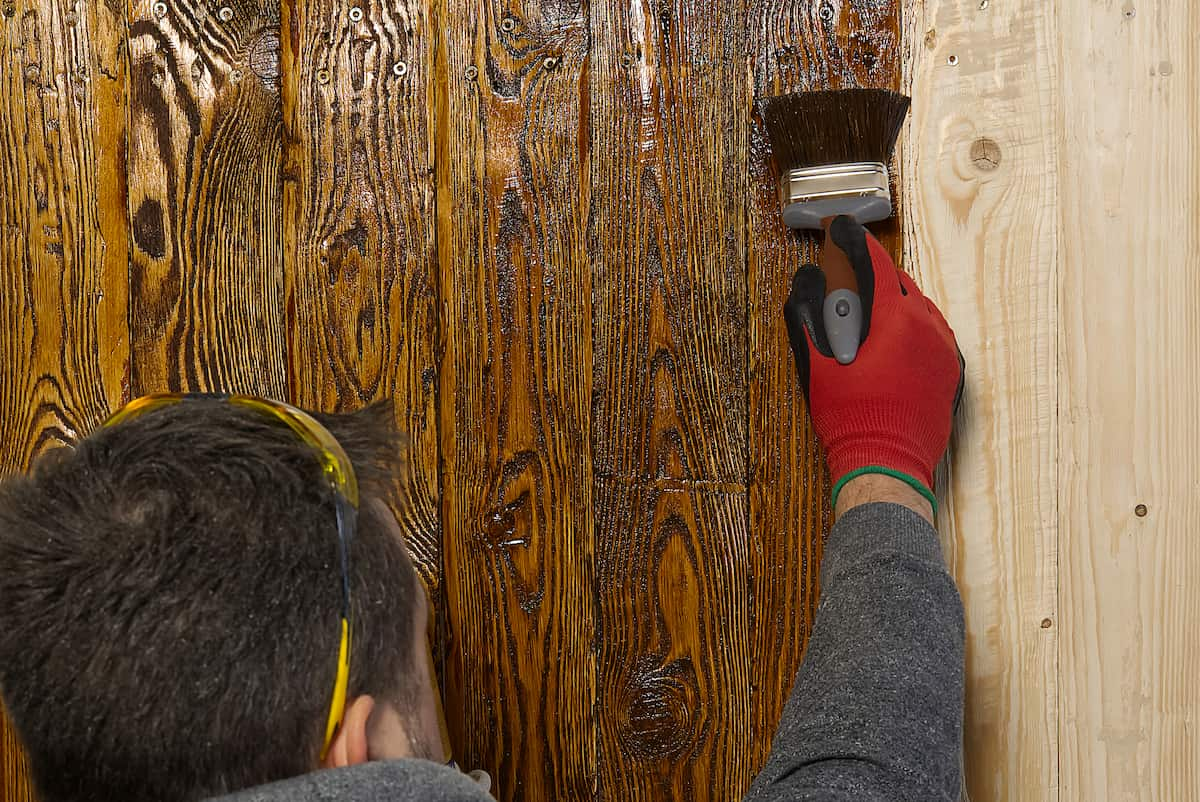
Apply a protective treatment to prevent moisture, mold, or sun damage:
Check:
Important: Never leave the roof resting on improvised supports, especially in wind-exposed areas: a poorly installed roof can fall during strong winds.
Building cheaply requires creativity, always with technical criteria.
Suitable only for temporary storage. Doesn’t offer sufficient protection in humid areas.
You can start with a small structure and expand it according to your needs.
Sometimes an old shed can be renovated with:
If they’re in good structural condition, they’re an excellent way to reduce costs.
Causes instability, doors that don’t close, and premature wear.
It swells, rots, and loses resistance: drastically shortens the shed’s lifespan.
Water will eventually seep in, panels will warp, and rot problems will emerge.
Cuts and impacts are very common in improvised DIY projects.
Many projects remain half-finished due to lack of planning.
Another common error is not providing a good ventilation system. Even an economical shed needs air circulation to prevent condensation, bad odors, or fungus appearance. A simple solution is to install vents on opposite sides or leave a small space between the roof and walls for air flow without compromising the structure.
It’s also common not to properly protect the junction between roof and side walls. Poor sealing causes leaks, especially in angled storms. Using butyl tape, metal profiles, or exterior sealants improves insulation and prevents infiltrations that deteriorate walls over time.
Professional tip: Work calmly, without rushing, and take periodic breaks. Accidents usually occur when trying to finish too quickly.
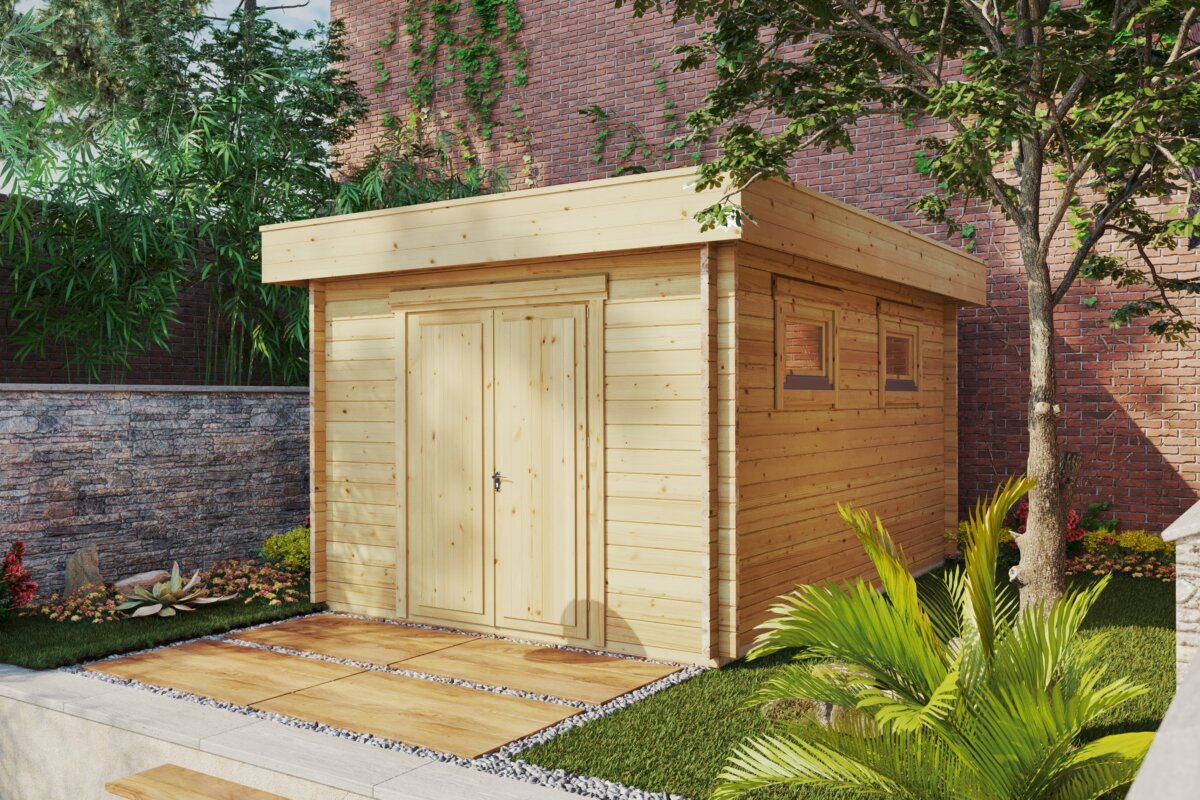
Buying a prefabricated shed can be an excellent decision if what you’re looking for is reliability, speed, and a product whose design has already been factory tested. Unlike manual construction, a prefabricated model offers the security of a controlled industrial process and a warranty that backs the investment.
However, not all prefabricated sheds are equal. To ensure your purchase is worthwhile, it’s essential to choose trustworthy manufacturers, recognized companies that offer clear warranties, good materials, and after-sales service that responds if problems arise.
Avoid unknown suppliers, sellers without references, or online stores offering suspiciously low prices; frequently, these sheds use low-quality materials or have defects not discovered until assembly.
Another way to maximize your purchase value is to acquire the shed at strategic times of year. Many brands offer significant discounts during winter or early spring, when demand is lower and stock is renewed. These offers can allow you to access a higher quality model without exceeding your budget.
It’s important to maintain realistic expectations: a very cheap prefabricated shed, even from a reliable supplier, will have a shorter lifespan and may require replacement or additional reinforcements over time.
The essential thing is to evaluate the whole package: solid design, good materials, and simple installation can represent considerable long-term savings, both in repairs and maintenance. Ultimately, if chosen well, a prefabricated shed represents a balanced investment between cost, durability, and peace of mind.
Essential checklist to remember:
✅ Define precisely what you need the shed for: storage, workshop, leisure area… This determines size, ventilation, and design.
✅ Establish a realistic budget: consider materials, tools, base, and future maintenance.
✅ Prioritize structural safety: check leveling, screws, joints, and roof stability.
✅ Choose materials compatible with your area’s climate: in humid areas, avoid untreated woods; in very hot zones, improve ventilation.
✅ Avoid storing flammable products or those sensitive to humidity: paints, gasoline, textiles, or electrical appliances require better conditions.
✅ Remember: a cheap shed can be safe and durable if built correctly.
✅ Plan annual maintenance: repainting, checking joints, waterproofing, and securing the roof significantly extends lifespan.
Building a cheap shed is perfectly possible if you plan with criteria, establish realistic expectations, and give absolute priority to safety. With proper design and well-selected materials, an economical shed can be functional, stable, and durable.
Don’t forget that a poorly executed structure can become a danger or an unexpected expense. Conversely, a stable and well-built shed adds value, order, and beauty to your garden, even when the budget is tight.
If you opt for the DIY route, always remember the essentials: use protective equipment at all times and double-check the stability of each element before considering the project finished.
And if you don’t feel completely confident with the DIY option, the most sensible choice is to select a prefabricated shed. These solutions offer quick assembly, factory-tested designs, and warranty, which reduces risks and ensures greater durability.
At Garden Sheds 24 you’ll find reliable, high-quality sheds from €4,300, with factory warranty and construction designed to last, so you can enjoy complete peace of mind.
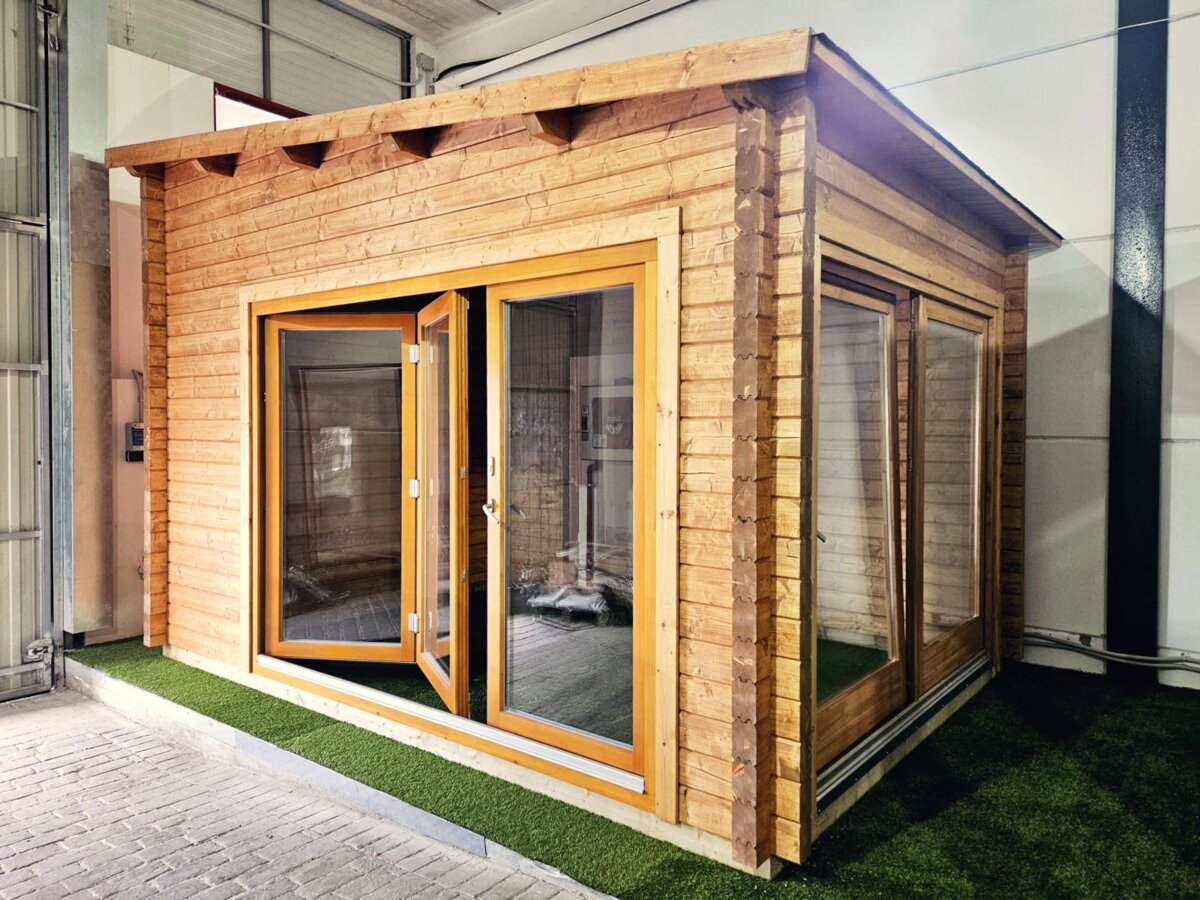
Generally between €500 and €1,500 if DIY, depending on materials and size. Quality prefabricated ones start around €4,300.
It depends on the autonomous community and constructed surface area. It’s advisable to consult local regulations.
OSB boards combined with treated pine are usually the cheapest and most resistant option. Avoid untreated pallets in humid areas.
Normally, between 2 and 5 years if it’s an economical construction. Good quality prefabricated ones usually last 10 years or more.
Tools, bicycles, and garden accessories. Avoid flammable objects or those sensitive to humidity.
The best prices are usually found in autumn and winter.